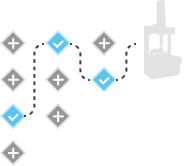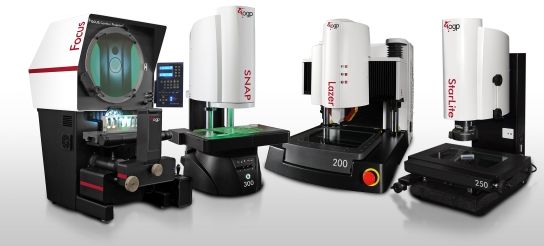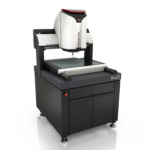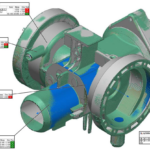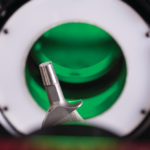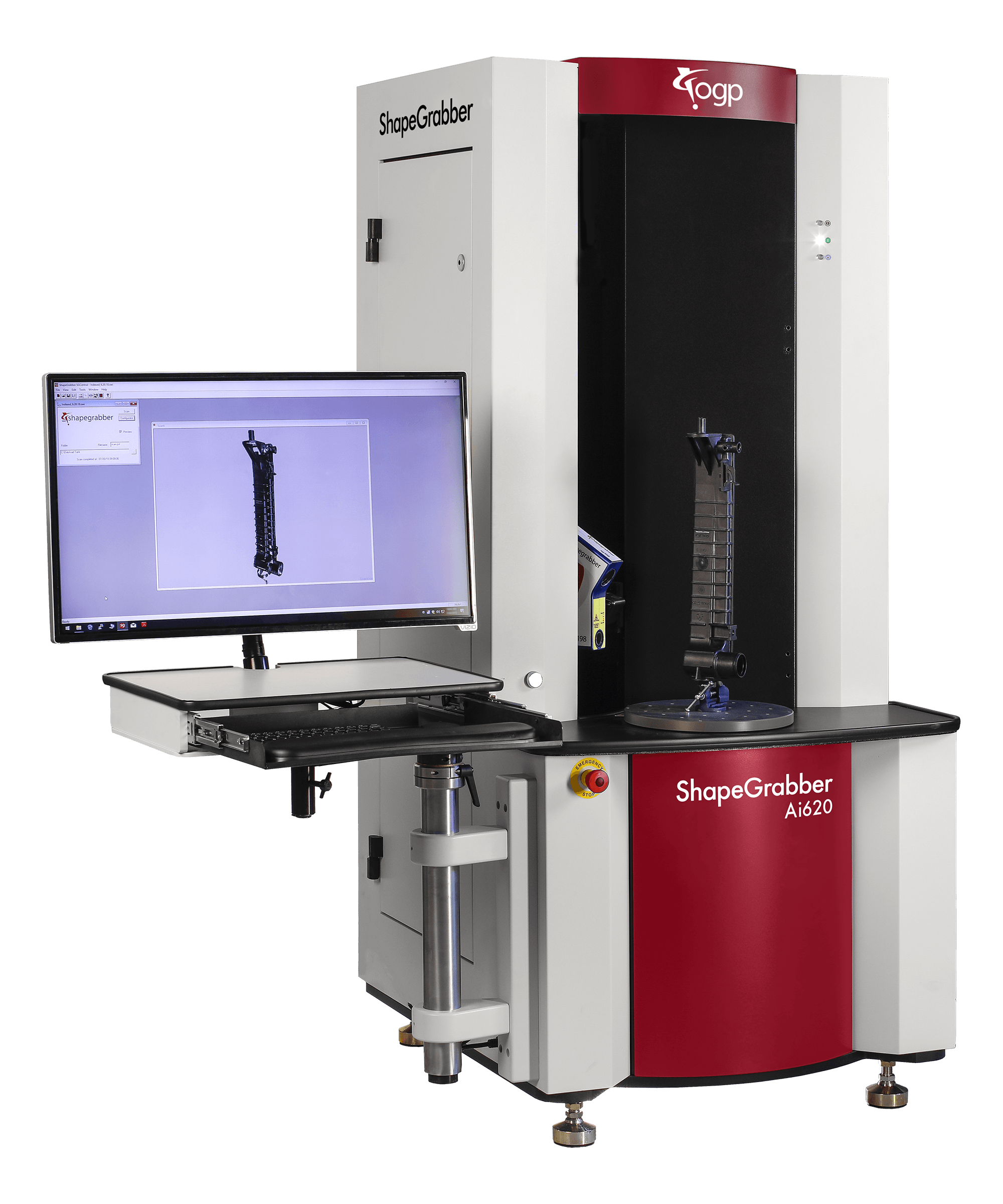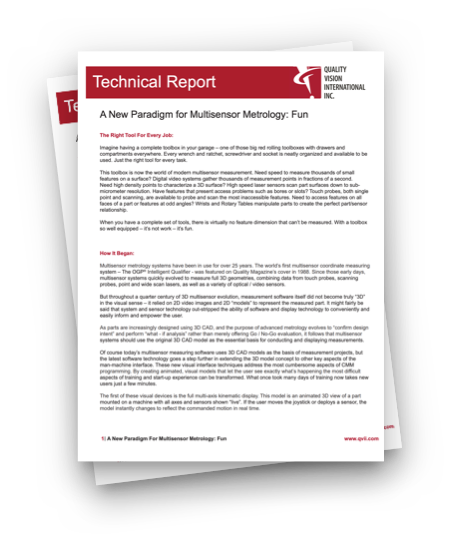Coordinate Measurement Machines are viewed as the gold standard when it comes to reliable measurement results. Everyone tends to trust the values generated by a CMM. But combining the capabilities of Laser Measurement Systems with CMM machines can present hybrid solutions that lead to faster measurement time, higher throughput, and cost savings.
What is a CMM?
A CMM, or Coordinate Measurement Machine, is a device that uses delicate contact sensors to capture data points from the geometry of a solid part on X, Y, and Z axes. The coordinates of those points are processed in metrology software to determine dimensional compliance to design specifications of the part, usually from CAD drawings.
CMMs feature large worktables with gantry, bridge, cantilever, or horizontal arm structures which allow sensors to be positioned over and around parts. Sensors typically include highly accurate electronic touch probes, but can also incorporate non-contact measurement technologies.
What is a Laser Scanner?
3D laser scanners are non-contact measurement devices which use laser light to capture data points on the surface of a part. The data points are then used to create digital 3D models for comparison to manufacturer specifications.
3D laser scanning devices are available in many different forms and sizes – portable and stationary. They also measure in varying degrees of accuracy from consumer level to metrology grade specifications.
CMM Machines vs. Laser Measurement Systems
CMM machines are known for capturing extremely accurate measurements down to sub-micron levels. They offer great flexibility in the measurement routines that can be written to match part specifications. But, whereas CMMs may capture several hundred points in a routine, 3D laser measurement systems capture hundreds of thousands or even millions of data points, and they can do it in a fraction of the time. While CMMs are used mostly for targeted inspection of certain areas of the part, laser scanners can create 3D models of the entire part.
Furthermore, CMM measurement routines can be very time consuming. Problems can arise if a CMM has not been programmed to capture areas on the part which are assumed to be compliant prior to measurement. And finally, CMM measurement is simply not ideal for certain complex part shapes and materials.
3 Advantages of ShapeGrabber 3D Laser Systems
OGP ShapeGrabber Automatic 3D Laser Scanning Systems are metrology-class 3D scanners that use high accuracy scanheads to fully measure complex shaped parts quickly and easily. Whereas CMM probing captures data points one point at a time, ShapeGrabber scanheads capture lines of coordinate data points simultaneously. The data capture rate can reach over 1.5 million data points per second. Additionally, these are the three other benefits of the OGP ShapeGrabber:
- ShapeGrabber systems are automated, meaning that they eliminate the need for software alignment and registration. Operators with a variety of skill sets can simply place the part on the rotary stage and initiate the scan with a click on the interface.
- ShapeGrabber systems are ideal for measuring complex shapes such as molded plastics, castings, stampings, and 3D printed parts – in a wide variety of materials, colors, and finishes.
- ShapeGrabber systems can often scan part areas that might be left out of CMM routines.
While physical probes still have the edge when it comes to accuracy, ShapeGrabber 3D laser scanners continue to improve and approach the capabilities of CMMs.
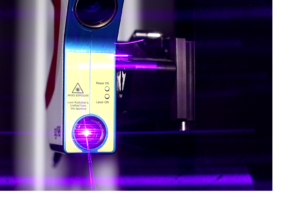
Combining Benefits of CMMs and ShapeGrabber 3D Laser Scanners
Manufactured parts will generally have many different features with different tolerances. Quality Inspectors will often look at the tightest tolerance on the drawing and decide, based on the strictest requirements, that a CMM is required. However, using a CMM for one hundred percent of feature inspection leads to very time-consuming inspection routines that slow throughput down.
Over the recent years, OGP has worked with hundreds of customers to implement laser scanning measurement solutions – and the most efficient approach to increasing throughput is a hybrid approach. This means using the appropriate tool for the measurement need and combining the benefits of both laser scanners and CMMs.
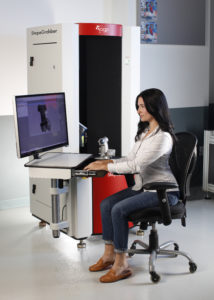
Capture Measurement Data Quickly
In hybrid configurations, ShapeGrabber scanners check the same parts being measured on a CMM in a matter of minutes. Even though the laser scanner may not meet the high accuracy requirements of the tightest tolerances, using both tools in conjunction can optimize throughput while increasing measurement efficiency by allowing the CMM to be focused on those most stringent requirements.
The 4 Step Hybrid Measurement Approach
In practice this means first checking the part that needs to be measured with the ShapeGrabber system.
- Scan the part on ShapeGrabber, before starting the CMM routine.
- Analyze the results. The 3D scanner-based analysis quickly gives feedback on most dimensions and provides an overall view of the part compared to the nominal design.
- If the part passes the first check, send it to the CMM where only the remaining critical features are measured.
- If the part fails the laser scanner inspection, then the part stops – and no time is wasted on the CMM.
Using Coordinate Measuring Machines + Laser Measurement Machines Saves Time and Money
It may seem counter intuitive to save time by using two steps instead of one, but we have seen total part inspection times drop by over 60% when using this hybrid approach. Customers also report avoiding shipping bad parts by catching defects at the scanner stage in regions of the part that would normally be left of CMM routines.
Coordinate Measuring Machines and 3D Laser Scanners are efficient metrology tools that have their own unique advantages and limitations. Using them in hybrid combinations can leverage their best attributes to reduce measurement time, increase inspection throughput, and save money. Let your local OGP Representative work with you to design and implement a hybrid measurement solution that combines benefits of both ShapeGrabber Automatic 3D Laser Scanning Systems and your CMM machines.


